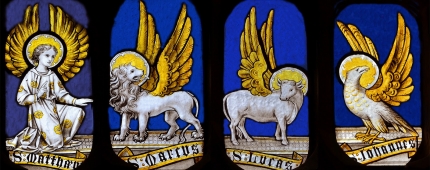Leviticus 11:5–6—How can the Bible say that the hyrax and the rabbit chew the cud when science now knows that they do not?
Problem: In Leviticus 11:5–6, two animals, the rock hyrax and the rabbit, were designated as unclean by Leviticus because, although they chew the cud, they do not divide the hoof. But, science has discovered that these two animals do not chew the cud. Isn’t it an error when the Bible says they chew the cud when in fact they do not?
Solution: Although they did not chew the cud in the modern technical sense, they did engage in a chewing action that looked the same to an observer. Thus, they are listed with other animals that chew the cud so that the common person could make the distinction from his or her everyday observations.
Animals which chew the cud are identified as ruminants; they regurgitate food into their mouths to be chewed again. Ruminants normally have four stomachs. Neither the rock hyrax (translated “rock badger” in the nasb) nor the rabbit are ruminants and technically do not chew the cud. However, both animals move their jaws in such a manner as to appear to be chewing the cud. This action was so convincing that the great Swedish scientist Linnaeus originally classified them as ruminants.
It is now known that rabbits practice what is called “reflection,” in which indigestible vegetable matter absorbs certain bacteria and is passed as droppings and then eaten again. This process enables the rabbit to better digest it. This process is very similar to rumination, and it gives the impression of chewing the cud. So, the Hebrew phrase “chewing the cud” should not be taken in the modern technical sense, but in the ancient sense of a chewing motion that includes both rumination and reflection in the modern sense.
The list of clean and unclean animals was intended as a practical guide for the Israelite in selecting food. The average Israelite would not have been aware of the technical aspects of cud chewing, and may have otherwise considered the hyrax and rabbit as clean animals because of the appearance of cud chewing. Consequently, it was necessary to point out that, although it may appear that these were clean animals because of their chewing movement, they were not clean because they did not divide the hoof. We often follow a similar practice when talking to those who are not familiar with more technical aspects of some point. For example, we use observational language to talk about the sun rising and setting when we talk to little children. To a small child the daily cycle of the sun has the appearance of rising and setting (see comments on Josh. 10:12–14). The description is not technically correct, but it is functionally useful for the level of understanding of the child. This is analogous to the use here in Leviticus. Technically, although the hyrax and the rabbit do not chew the cud, this description was functional at the time in order to make the point that these animals were considered unclean.
See All Problems
This excerpt is from When Critics Ask: A Popular Handbook on Bible Difficulties (Wheaton, Ill.: Victor Books, 1992). © 2014 Norman Geisler and Thomas Howe. All rights reserved. Used by permission. Click here to purchase this book.














